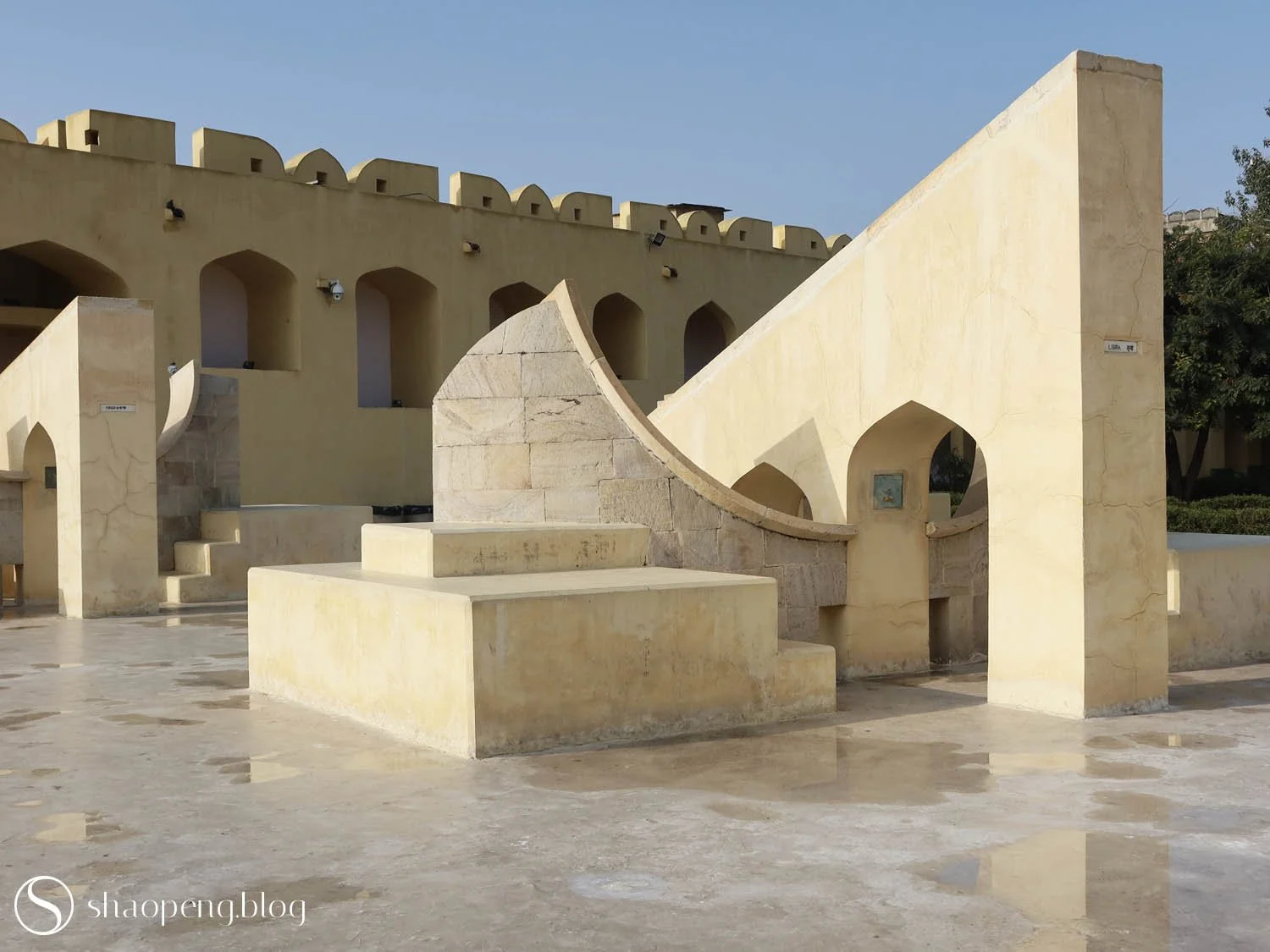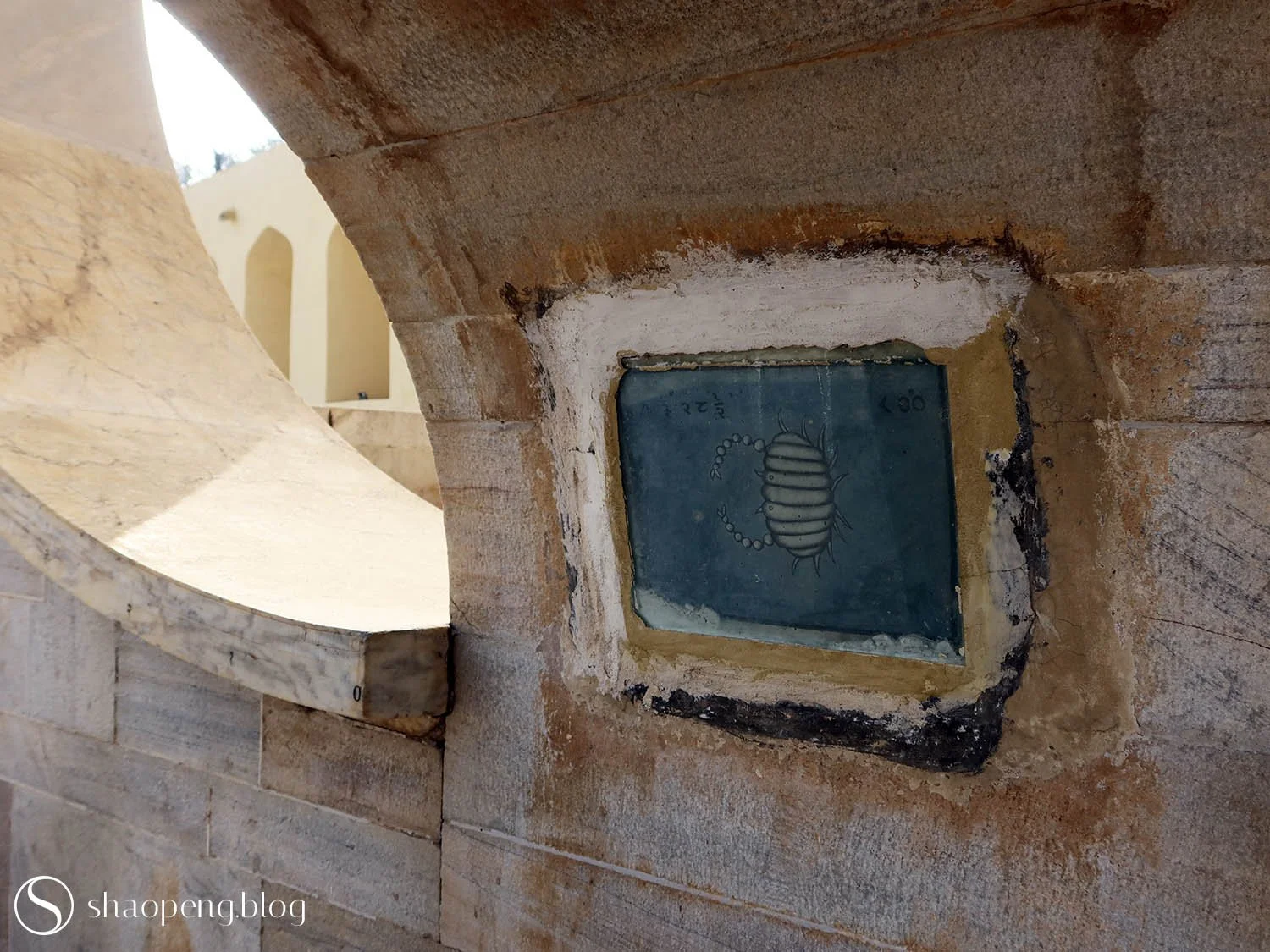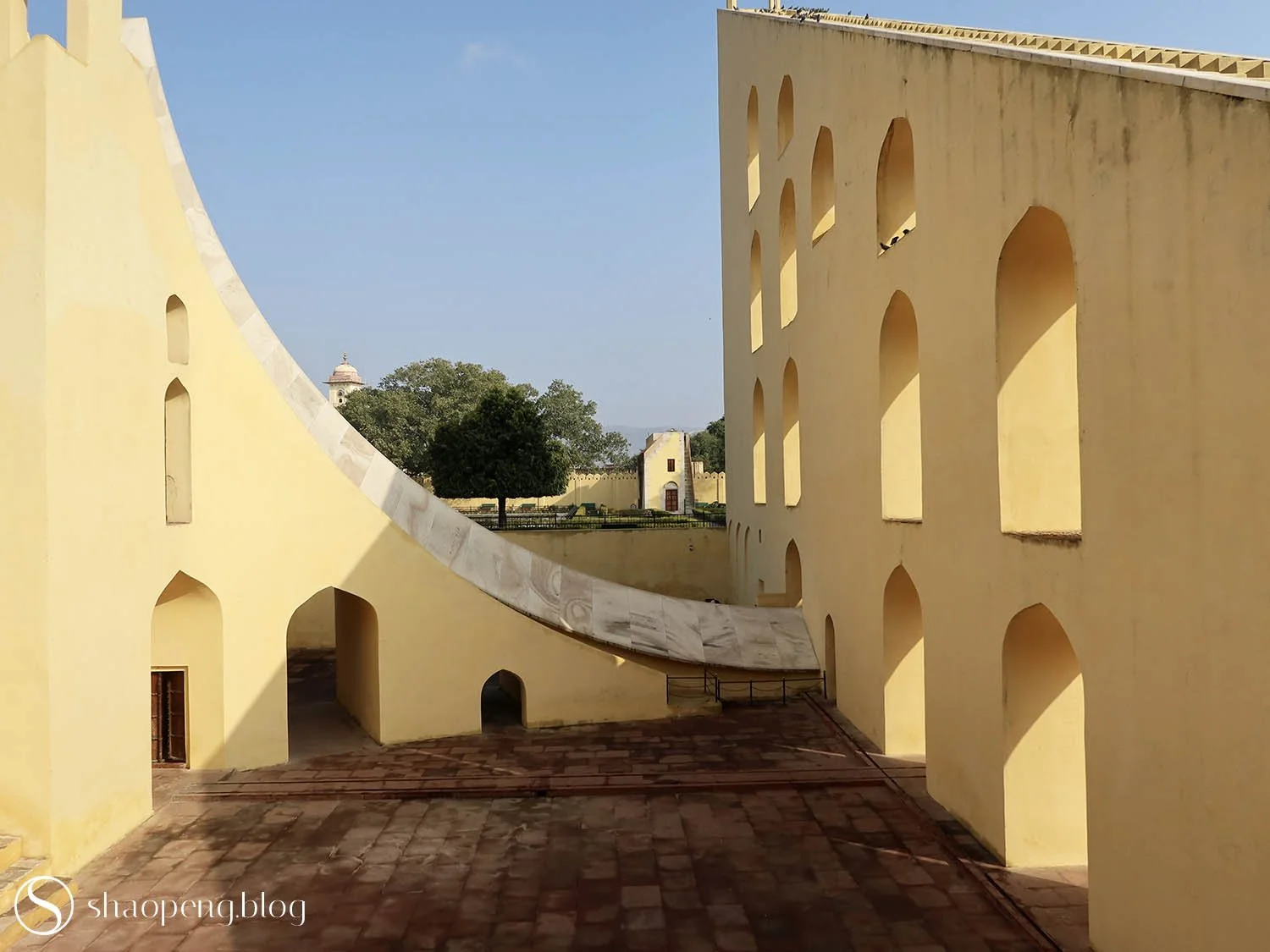Under Jaipur Skies: Jantar Mantar
Nestled just beside Jaipur’s City Palace, Jantar Mantar stands as a testament to a remarkable fusion of scientific curiosity and architectural ingenuity.
Sense of Wander: ★★★★★
Samrat Yantra, the world’s largest sundial, illuminates astronomical advancements in 18th-century India.
JAIPUR, India — Stepping into the Jantar Mantar is like entering an amusement park. The various astronomical instruments within the complex are akin to the attractions in a theme park, each offering a unique perspective on the celestial bodies in the sky.
As soon as you set foot into this observatory in the heart of Jaipur, you’ll encounter the Narivalaya Yantra, a pair of equatorial sundials used to measure local solar time — one side for winter, the other for summer — at the latitude of Jaipur. Its large, round disc made of local stone and marble is akin to the majestic Ferris wheel, a symbol of dreams for every child, embodying the wonder and excitement of reaching new heights and seeing the world from a different perspective.
The Rashivalaya Yantra comprises a group of 12 instruments, with each representing one of the 12 zodiac signs. These observatory instruments, spread throughout the complex, resemble the labyrinth of a funhouse, unveiling hidden paths and secrets of the stars. They invite curious wanderers like you and me to explore distant heavenly bodies at our own pace. What’s intriguing is that each instrument faces a different direction, corresponding to the position of each zodiac sign. When determining the position of a zodiac sign, astronomers would utilise the corresponding instrument.
The local solar time can be read from Narivalaya Yantra by observing the position of the shadow cast by the rod-like gnomon at the centre of the dial.
Rashivalaya Yantra comprises a group of 12 instruments, with each representing one of the 12 zodiac signs
This painting depicting the Scorpio sign was spotted at one of the Rashivalaya Yantras, dedicated to observing the respective zodiac sign.
One highlight not to be missed at the Jantar Mantar is the towering Samrat Yantra — the world’s largest sundial, constructed from local stone and marble. Its marbled quadrant, the curved surface facilitating precise time measurements based on the gnomon’s shadow position, resembles a rollercoaster adventure. Its dramatic incline mirrors a grand ascent through the vast expanse of time, offering an exhilarating and overarching view of a world where, as suggested by Albert Einstein, time is merely a “stubbornly persistent illusion that signifies nothing.”
The marbled quadrant of Samrat Yantra is akin to a roller coaster adventure, offering an exhilarating and overarching view of a world where, as suggested byAlbert Einstein, time is merely a ‘stubbornly persistent illusion that signifies nothing.’
The Ram Yantra, on the other hand, was designed for measuring the altitude and azimuth of celestial bodies. Astronomers precisely determine the altitude (the angle above the horizon) and azimuth (the angle along the horizon) by observing a celestial object’s position relative to these markings. Its expansive, open cylindrical structures, accentuated by a central pillar, resemble a carousel. Much like the carousel’s circle spin, offering riders a continuous and joyful journey, the Ram Yantra provides a cyclical perspective of the sky by mapping stellar coordinates with dancing precision.
Samrat Yantra, the world’s largest sundial, is a highlight not to be missed at the Jantar Mantar in Jaipur.
The marbled quadrant of the Samrat Yantra resembles the dramatic rail of a rollercoaster.
Jantar Mantar, perhaps the most significant observatory in India, was conceived by Sawai Jai Singh II, whose fervent dedication to mapping the skies gave birth to this astronomical wonderland.
But who exactly was Sawai Jai Singh II?
Sawai Jai Singh II (reigned 1699-1727) was the 29th Kachwaha Rajput ruler of the Kingdom of Amber, the visionary who later established the fortified city of Jaipur and designated it as his capital.
Born on November 3, 1688 under Tula Rashi (the zodiac sign of Libra), Jai Sing II was an admirer of art, architecture and science. Court astrologers predicted to his father, Raja Bishan Singh (reigned 1688-1699) of the Kingdom of Amer, that his son would shine like Jupiter in the galaxy of princes.
Jai Singh II was fortunate to have been raised among scholars and learned tutors, becoming well-versed in art, architecture, religion, and philosophy. His fascination with astronomy likely stemmed from his tutor, Jagannath Samrat, who imparted to the young ruler teachings from ancient Hindu treatises such as the Surya Siddhanta, a Sanskrit text in Indian astronomy dating back to the 4th or 5th century.
A devoted student of astronomy, Jai Singh II felt unsatisfied with the results yielded by the regular brass instruments he was using. He dreamed of constructing giant observatory to attain the precision he was seeking. The young Rajput ruler dispatched his emissaries across the world to obtain the most accurate and cutting-edge data possible, one notable acquisition was the astronomical tables published by French astronomer Philippe de La Hire (1640-1718).
Driven by a desire to enhance celestial observation, Jai Singh II meticulously designed astronomical instruments capable of measuring time, predicting eclipses, and tracking the movements of stars and planets with unparalleled precision. Each instrument stands as a testament to the era’s understanding of celestial mechanics.
This smaller version of the Samrat Yantra, made of red sandstone and white marble, tells time with precision. Its curved quadrant divides each hour into 60 minutes and each minute into 3 fractions. In this photo, it reads 9:20 am.
Despite facing local wars and foreign invasions, Jai Singh II ordered the construction of a total of five observatories — or “Jantar Mantars” as they are commonly known — in northern India. These observatories consist of multiple structures of unique forms, some reminiscent of works of art by modern sculptors, each serving a different function for astronomical measurement.
Between 1724 and 1730, observatories were erected in Jaipur, Delhi, Ujjain, Banaras, and Mathura. Among them, the Jantar Mantar in Jaipur, completed in 1728, stands as the largest and best-preserved. The observatory built by the young Rajput ruler even proved to be 20 seconds more accurate than Philippe de la Hire’s table.
Jai Singh II was bestowed the “Sawai” title by the Mughal Emperor Aurangzeb (reigned 1658-1707), signifying one and a quarter times more honour than his contemporaries. This title was later inherited by his descendant, Brigadier Maharaja Sawai Bhawani Singh (reigned 1970-1971).
The Jai Prakash Yantra consists of two large concave marble bowls. By casting the sun's shadow through a metal ring onto the marble surface, it calculates various astronomical measurements. This invention is credited to Maharaja Sawai Jai Singh II.
Nestled just beside Jaipur’s City Palace, Jantar Mantar stands as a testament to a remarkable fusion of scientific curiosity and architectural ingenuity.
“Jantar” translates to “instrument,” and “Mantar” to “formula or calculation.” Therefore, “Jantar Mantar” means “instrument for calculation.” While this name aptly describes the purpose and precision of the astronomical instruments it houses, it fails to convey the story of how the passion of a Rajput ruler from the 18th-century inspired its creation.
Though not exactly an astronomy enthusiast myself, my visit to the observatory proved unexpectedly delightful. Much like the diverse attractions in an amusement park, each instrument at Jantar Mantar offered a captivating perspective on the universe.
Lost in fascination like a child navigating an amusement park, I wandered among the various instruments, eager to uncover their purposes and marvel at how such man-made structures could capture the wonder of distant celestial bodies. And guess what? The sundials still accurately tell time today!
This isn't your typical globe; it's a Khagol Yantra — a celestial and terrestrial globe for observing the positions of the sun and other heavenly bodies.
It’s human natural to yearn for venture into the unknown. Since time immemorial, our curiosity about the world around us has led us to traverse uncharted lands, seas, and skies, unveiling the breadth and depth of the universe’s offerings.
As I roamed within the confines of Jantar Mantar, Maharaja Sawai Jai Singh II’s profound fascination with astronomy left a lasting impression on me. I was particularly struck by how this Rajput ruler, amidst the hustle and bustle of his royal duties, had the determination to turn his astronomical dream into reality. Little could the Maharaja have foreseen that, nearly three centuries later, a traveller from distant lands would be moved by his unparalleled dedication and passion for his pursuits.
On that very evening, I gazed up at the celestial canopy shrouding the city of Jaipur — not seeking guidance or answers as a sailor or astrologer might, but rather contemplating and reflecting on the path that I ought to forge ahead.
Reference:
Jain, V. (Ed.). (2012). Jantar Mantar- The Astronomical Observatory Of Maharaja Sawai Jai Singh II. Mittal Publishing.









